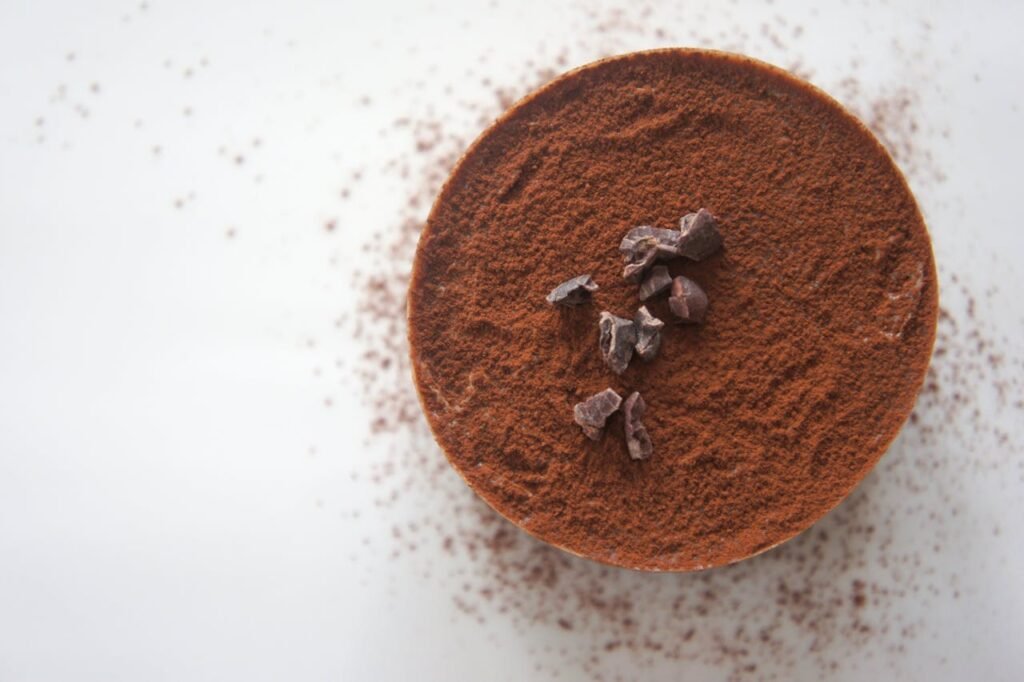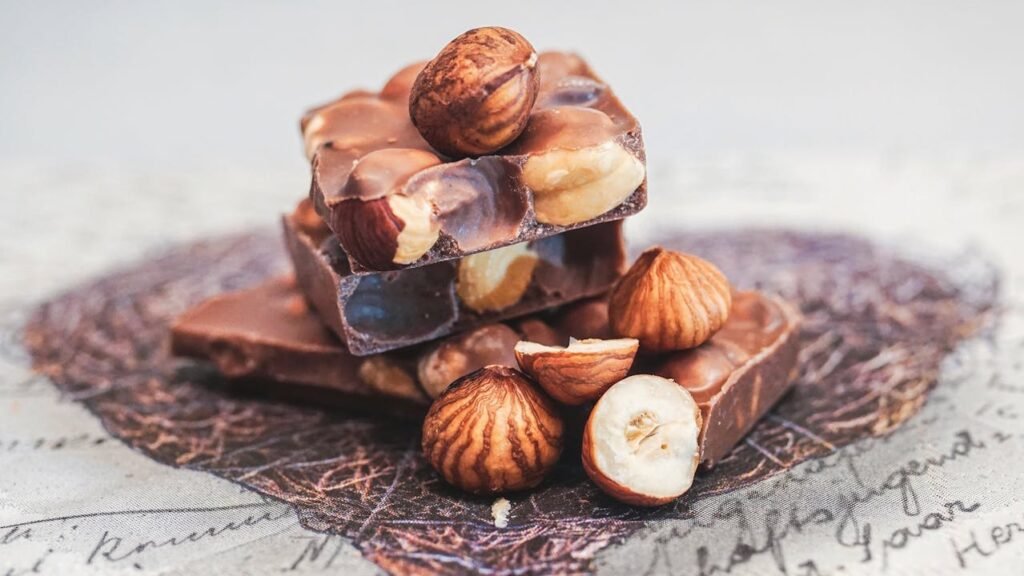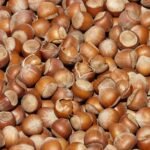Understanding the caffeine content in chocolate is crucial for both casual consumers and those monitoring their caffeine intake. This comprehensive guide explores the varying levels of caffeine across different chocolate types, helping you make informed decisions about your chocolate consumption.
Dark Chocolate and Its Caffeine Content
Dark chocolate stands as the most potent source of caffeine among chocolate varieties. The higher the cocoa percentage, the more caffeine you’ll find in your dark chocolate bar. Premium dark chocolate brands typically contain between 12-50mg of caffeine per 100-gram serving.
Varying Percentages and Their Impact
The cocoa percentage directly correlates with caffeine content. An 85% dark chocolate bar contains significantly more caffeine than a 60% variant. This relationship stems from the concentrated cocoa solids, which naturally contain both caffeine and theobromine.
Health Implications
Dark chocolate’s caffeine content contributes to its reputation as a healthy indulgence. The combination of caffeine and antioxidants can boost energy levels and cognitive function when consumed in moderation. However, consuming large quantities, especially in the evening, might affect sleep patterns.
Milk Chocolate’s Caffeine Profile
Milk chocolate contains notably less caffeine than its darker counterpart, typically ranging from 3-10mg per 100-gram serving. The addition of milk solids and sugar dilutes the cocoa content, resulting in lower caffeine levels.
Absorption Patterns
The presence of milk proteins can affect how your body processes the caffeine in milk chocolate. This interaction often leads to a slower release of caffeine compared to dark chocolate, providing a more gradual energy boost.
Consumer Preferences
Despite lower caffeine content, milk chocolate remains the most popular variety globally. Its sweeter taste and creamy texture make it an appealing choice for those seeking a milder chocolate experience without significant caffeine intake.
White Chocolate and Caffeine
White chocolate technically contains no caffeine, as it’s made from cocoa butter rather than cocoa solids. This makes it an ideal choice for those avoiding caffeine entirely.
Composition Analysis
The absence of cocoa solids in white chocolate explains its zero caffeine content. However, it still contains cocoa butter, sugar, and milk solids, giving it its characteristic creamy texture and sweet taste.
Consumer Considerations
While caffeine-free, white chocolate typically contains more sugar and fat than other varieties. This nutritional profile makes it important to consider portion sizes, despite the absence of caffeine.

Chocolate Products and Their Caffeine Content
Various chocolate-based products contain different levels of caffeine, depending on their composition and preparation method.
Hot Chocolate and Chocolate Drinks
A typical cup of hot chocolate contains 5-10mg of caffeine, though this can vary significantly based on preparation method and cocoa powder content. Commercial chocolate drinks often contain added caffeine for enhanced effect.
Chocolate-Flavoured Snacks
Products like chocolate-covered coffee beans combine the caffeine from both chocolate and coffee, resulting in higher caffeine content. Standard chocolate-flavoured snacks typically contain minimal caffeine due to lower cocoa content.
Factors Influencing Caffeine Levels
Several elements affect the caffeine content in chocolate products.
Bean Origin and Processing
Different cocoa bean varieties naturally contain varying amounts of caffeine. Processing methods, including fermentation and roasting, can also impact the final caffeine content.
Manufacturing Techniques
Industrial chocolate production often involves precise control over caffeine levels through careful selection of ingredients and processing methods. Artisanal chocolatiers might have more variation in their products’ caffeine content.
Understanding Caffeine Sensitivity
Individual responses to chocolate’s caffeine content can vary significantly.
Personal Tolerance Levels
Regular chocolate consumers might develop a tolerance to its caffeine content. However, those sensitive to caffeine should monitor their chocolate intake, particularly of darker varieties.
Time of Consumption
The timing of chocolate consumption can affect its impact. Evening consumption of high-caffeine chocolate might interfere with sleep patterns for sensitive individuals.
Health Benefits of Chocolate’s Caffeine Content
The caffeine in chocolate, particularly dark chocolate, offers several notable health advantages when consumed responsibly. The combination of caffeine and other bioactive compounds creates a unique synergy that supports overall wellbeing.
Antioxidant Properties
The caffeine in chocolate works alongside flavonoids and other antioxidants to combat free radicals in the body. Dark chocolate with higher caffeine content provides the most significant antioxidant benefits, potentially reducing inflammation and supporting cellular health.
Cognitive Enhancement
The moderate caffeine levels found in chocolate can improve mental alertness and cognitive function. Regular consumption of dark chocolate has been linked to better memory retention and increased focus, particularly in older adults.
Mood Regulation
Chocolate’s caffeine content, combined with other compounds like theobromine and phenylethylamine, contributes to its mood-elevating properties. This combination can help reduce stress and promote a sense of wellbeing.
Chocolate Production and Caffeine Variation
Understanding how chocolate is made helps explain the variations in caffeine content across different products and brands.
Bean Selection Impact
The type of cocoa beans used significantly influences caffeine content. Criollo beans typically contain less caffeine than Forastero varieties, while Trinitario beans offer a middle ground. This selection process allows manufacturers to control caffeine levels in their final products.
Roasting Effects
The roasting process can alter caffeine levels in chocolate. Longer roasting times at higher temperatures may slightly reduce caffeine content, while preserving other desirable compounds that contribute to flavor and aroma.
Scientific Analysis of Caffeine Absorption from Chocolate
The way our bodies process caffeine from chocolate differs from other caffeine sources, making it a unique dietary consideration.
Bioavailability Factors
The fat content in chocolate affects how caffeine is absorbed into the bloodstream. The cocoa butter matrix can slow caffeine release, providing a more sustained energy boost compared to coffee or energy drinks.
Metabolic Interactions
Other compounds in chocolate, such as theobromine and polyphenols, interact with caffeine metabolism. This interaction can extend the stimulant effects and potentially enhance cognitive benefits.
Seasonal Variations in Chocolate Caffeine Content
Environmental factors during cocoa growing seasons can impact the final caffeine content of chocolate products.
Weather Impact
Drought conditions often result in higher caffeine concentrations in cocoa beans, while excessive rainfall may dilute caffeine levels. These variations affect the final caffeine content in chocolate products.
Harvest Timing
The maturity of cocoa pods at harvest influences their caffeine content. Optimal harvest timing helps maintain consistent caffeine levels in commercial chocolate production.
Professional Uses of Chocolate’s Caffeine Content
Various industries leverage the caffeine content in chocolate for specific purposes.
Sports Nutrition
Athletes and nutritionists incorporate chocolate into training diets, considering its caffeine content for performance enhancement. Dark chocolate particularly serves as a natural alternative to synthetic caffeine supplements.
Culinary Applications
Professional chefs consider chocolate’s caffeine content when developing recipes, especially for evening desserts or breakfast items. This awareness helps create appropriately energizing or relaxing dishes.
Age-Related Considerations for Chocolate Caffeine
Different age groups require varying approaches to chocolate consumption based on caffeine sensitivity.
Elderly Consumption
Older adults often show increased sensitivity to caffeine, making it important to monitor chocolate intake, particularly in the evening hours.
Adolescent Guidelines
Teenagers’ developing bodies process caffeine differently, requiring careful consideration of chocolate consumption, especially during study periods or before bedtime.
Chocolate Caffeine in Different Climates
Storage and consumption patterns vary by climate, affecting chocolate’s caffeine impact.
Tropical Considerations
Higher temperatures can affect chocolate’s chemical composition, potentially altering how caffeine is released during consumption. Proper storage becomes crucial in warmer climates.
Cold Weather Effects
Chocolate consumption often increases in colder weather, making caffeine intake monitoring more important during winter months.
Artisanal Chocolate and Caffeine Content
Small-batch chocolate makers approach caffeine content differently than large manufacturers.
Craft Production Methods
Artisanal chocolatiers often use traditional processing methods that can result in varying caffeine levels. This variation contributes to unique product characteristics.
Bean-to-Bar Considerations
Direct sourcing of cocoa beans allows craft makers to select for specific caffeine profiles, though this can lead to more variation between batches.
Digital Tools for Tracking Chocolate Caffeine
Modern technology helps consumers monitor their chocolate-derived caffeine intake.
Mobile Applications
Several apps now include chocolate-specific caffeine tracking features, helping users monitor their total daily caffeine consumption from all sources.
Online Calculators
Web-based tools can estimate caffeine intake based on chocolate type and quantity consumed, aiding in dietary planning.
International Trade and Chocolate Caffeine Standards
Global commerce affects how chocolate caffeine content is regulated and labeled.
Import Regulations
Different countries maintain varying standards for chocolate caffeine content disclosure, affecting international trade and labeling requirements.
Export Considerations
Manufacturers must often adjust formulations to meet different markets’ caffeine content expectations and regulations.
Chocolate Caffeine Research Developments
Ongoing studies continue to reveal new insights about chocolate’s caffeine content and effects.
Recent Findings
New research suggests that chocolate’s caffeine may have unique properties when combined with its other natural compounds, potentially offering enhanced benefits.
Future Directions
Emerging studies focus on developing more precise methods for controlling and measuring caffeine content in chocolate products.
Sustainable Practices and Caffeine Quality
Environmental consciousness in chocolate production affects caffeine content and quality.
Organic Farming Impact
Organic growing practices can influence cocoa beans’ natural caffeine levels, often resulting in more consistent content across harvests.
Fair Trade Considerations
Sustainable farming practices promoted by fair trade certification often lead to better quality control in caffeine content.
Medical Perspectives on Chocolate Caffeine
Healthcare professionals offer specific guidance on chocolate caffeine consumption.
Clinical Recommendations
Medical experts often provide guidelines for chocolate consumption based on individual health conditions and caffeine sensitivity.
Therapeutic Applications
Some healthcare practitioners incorporate chocolate’s caffeine content into treatment plans for certain conditions, particularly those affecting energy levels and mood.

Economic Factors in Chocolate Caffeine Production
Market forces influence how manufacturers approach caffeine content in their products.
Consumer Demand
Growing awareness of caffeine content drives product development and marketing strategies in the chocolate industry.
Production Costs
The expense of controlling and testing caffeine levels affects pricing and availability of different chocolate varieties.
Chocolate Caffeine in Popular Culture
Media and society’s portrayal of chocolate’s caffeine content shapes public perception and consumption habits.
Marketing Impact
Advertising often highlights or downplays chocolate’s caffeine content depending on target audience and product positioning.
Social Media Influence
Online discussions and trends affect how people view and consume chocolate based on its caffeine content.
Understanding how much caffeine is in chocolate continues to evolve as new research emerges and consumer awareness grows. This knowledge helps individuals make informed choices about their chocolate consumption while appreciating the complex factors that influence caffeine content across different chocolate types.
Special Dietary Considerations
The caffeine content in chocolate requires special attention for certain dietary needs and restrictions.
Pregnancy and Chocolate Consumption
Pregnant women often need to monitor their caffeine intake carefully. While chocolate generally contains moderate amounts of caffeine, it’s important to consider it as part of the total daily caffeine consumption.
Children and Chocolate
Children’s sensitivity to caffeine means parents should be mindful of their chocolate consumption, particularly of dark chocolate varieties. Milk chocolate and white chocolate are generally safer options for younger children.
Global Chocolate Standards and Caffeine Content
Different regions have varying standards for chocolate production, affecting caffeine content in commercial products.
European Standards
European chocolate regulations require specific cocoa content minimums, which indirectly influence caffeine levels. These standards often result in higher average caffeine content compared to other markets.
American Guidelines
U.S. chocolate manufacturers follow FDA guidelines that allow more flexibility in formulation, leading to greater variation in caffeine content among products.
Chocolate Alternatives for Caffeine-Sensitive Individuals
For those seeking to enjoy chocolate while managing caffeine intake, several options exist.
Carob Products
Carob provides a chocolate-like flavor without any caffeine content. It’s an excellent alternative for those completely avoiding caffeine while still craving chocolate-like treats.
Low-Caffeine Chocolate Varieties
Some manufacturers now produce specially processed chocolate with reduced caffeine content, maintaining the familiar taste while accommodating caffeine sensitivity.
The Future of Chocolate and Caffeine Content
Innovation in chocolate production continues to evolve, offering new possibilities for caffeine content control.
Emerging Technologies
New processing methods are being developed to better control caffeine levels in chocolate while maintaining desired flavor profiles. These innovations may soon allow for more precise caffeine content management.
Consumer Trends
Growing awareness of caffeine sensitivity is driving demand for more detailed labeling and varied options in chocolate products, influencing industry development.
Practical Tips for Chocolate Consumption
Making informed choices about chocolate consumption helps manage caffeine intake effectively.
Reading Labels
Understanding chocolate labels is crucial for monitoring caffeine intake. Look for cocoa percentage and serving size information to estimate caffeine content.
Timing Considerations
Strategic timing of chocolate consumption can help avoid sleep disruption. Consider enjoying higher-caffeine chocolates earlier in the day.
Environmental Factors Affecting Caffeine in Chocolate
Various environmental conditions influence the caffeine content of chocolate products.
Growing Conditions
Soil composition, climate, and altitude affect cocoa beans’ caffeine content. These factors contribute to regional variations in chocolate’s caffeine levels.
Storage Impact
Proper storage conditions help maintain consistent caffeine levels in chocolate products. Temperature and humidity control are essential for preserving intended caffeine content.
Chocolate and Exercise Performance
The relationship between chocolate’s caffeine content and physical performance presents interesting considerations for athletes and fitness enthusiasts.
Pre-Workout Benefits
The moderate caffeine content in dark chocolate can serve as a natural pre-workout boost, enhancing endurance and focus during exercise sessions.
Recovery Properties
Post-exercise consumption of chocolate may aid recovery through its combination of caffeine, antioxidants, and other beneficial compounds.
Measuring Caffeine Content in Chocolate
Understanding how caffeine levels are measured in chocolate products helps consumers make informed choices.
Testing Methods
Modern analytical techniques provide accurate measurements of caffeine content in chocolate products, ensuring consistent quality control.
Industry Standards
Chocolate manufacturers employ various methods to maintain consistent caffeine levels across their product lines, following established industry guidelines.
Cultural Perspectives on Chocolate and Caffeine
Different cultures view chocolate’s caffeine content through various lenses, influencing consumption patterns and preferences.
Traditional Uses
Historical uses of chocolate often centered on its stimulant properties, with many cultures recognizing and utilizing its caffeine content for ceremonial purposes.
Modern Interpretations
Contemporary cultural attitudes toward chocolate’s caffeine content vary globally, affecting how different societies approach chocolate consumption.
This comprehensive exploration of caffeine in chocolate demonstrates the complexity and importance of understanding this aspect of one of the world’s favorite treats. Whether you’re monitoring your caffeine intake or simply curious about your chocolate consumption, knowledge of these variations helps make informed choices about how much caffeine is in different types of chocolate.
Conclusion
The caffeine content in chocolate varies significantly across different types, with dark chocolate containing the most and white chocolate containing none. Understanding these variations helps consumers make informed choices based on their caffeine preferences and sensitivities.
FAQ Section
Common Questions About Caffeine in Chocolate
| Question | Answer |
|---|---|
| Which chocolate has the most caffeine? | Dark chocolate with high cocoa content |
| Is white chocolate caffeine-free? | Yes, completely caffeine-free |
| Can chocolate keep you awake? | Yes, especially dark chocolate consumed in the evening |
| How much chocolate is too much? | Depends on individual caffeine sensitivity and the type of chocolate |
Caffeine Content Table
| Chocolate Type | Caffeine per 100g |
|---|---|
| Dark Chocolate (70-85%) | 30-50mg |
| Dark Chocolate (50-69%) | 15-30mg |
| Milk Chocolate | 3-10mg |
| White Chocolate | 0mg |
| Hot Chocolate (per cup) | 5-10mg |
Remember, the caffeine content in chocolate varies by brand and preparation method, so these figures serve as general guidelines for understanding how much caffeine is in different types of chocolate.






